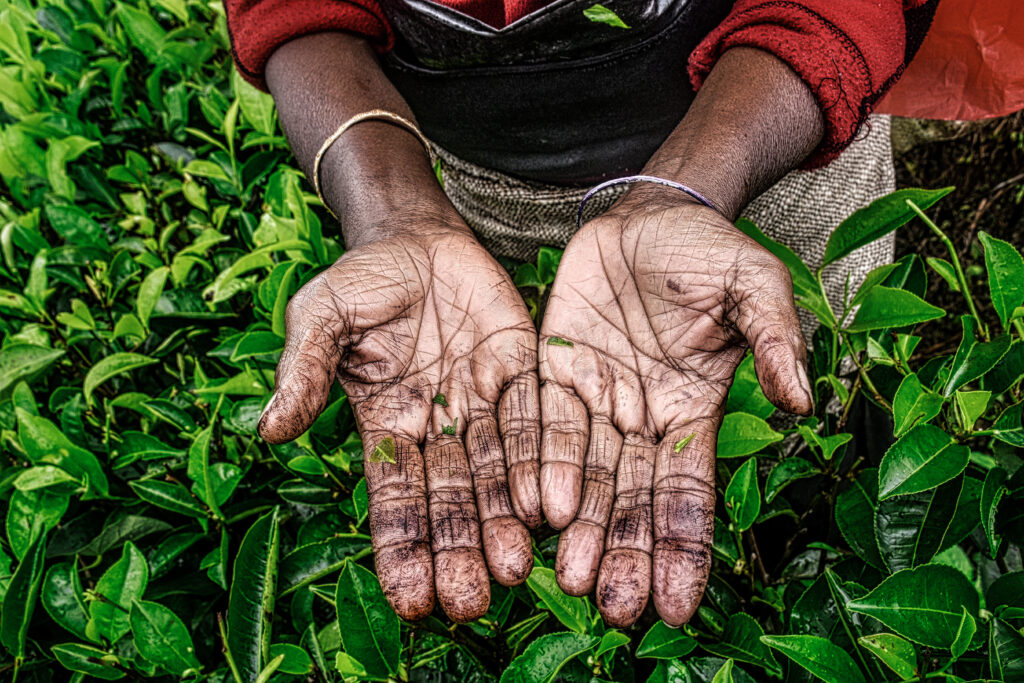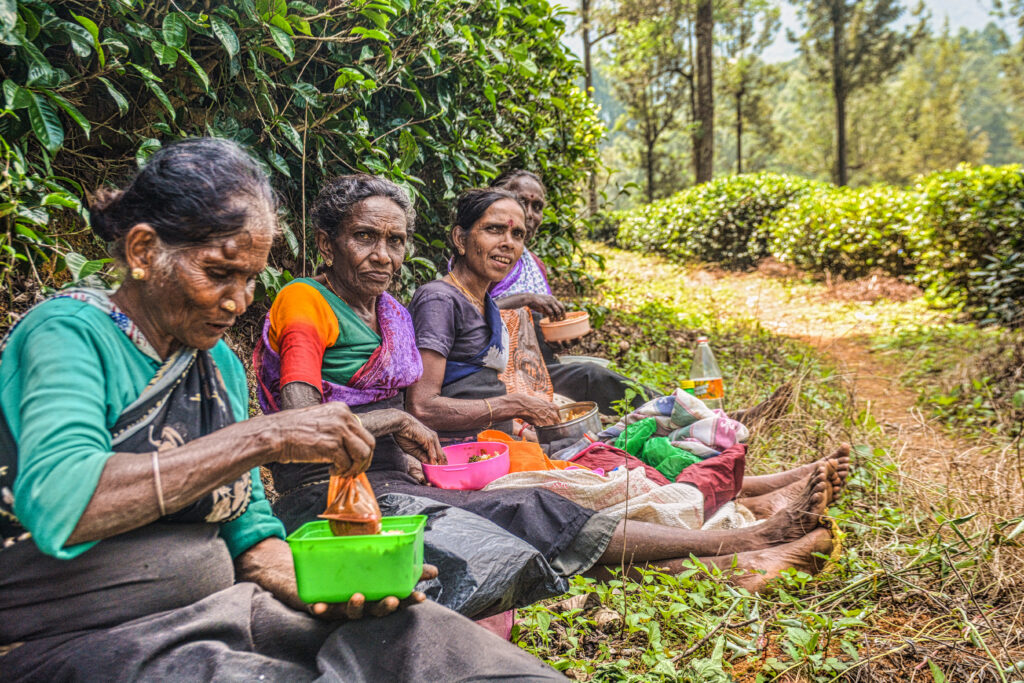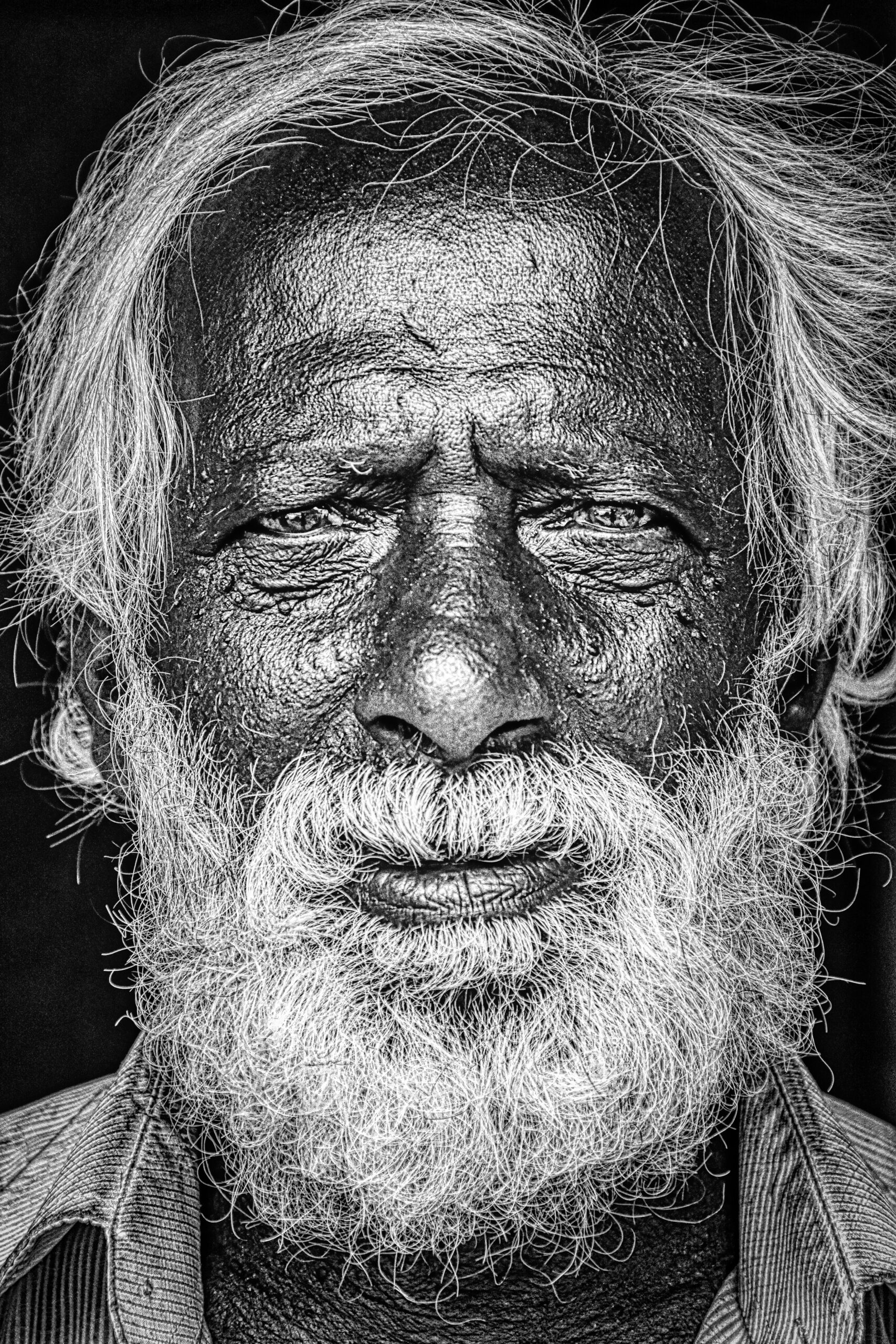There was this one question practically everyone asked at the exhibition. That was: ‘Why are you just focusing on sadness? What about happiness?’ ‘Take a look- these photographs show only suffering and hopelessness. They create a sense of regret.’ There were people who also made this kind of heavy comment. We had the answers already. “There are lots of others to show you happiness: In fact-they practically represent happiness. What we wanted to do was to show you the underlying misery and show you the truth. We wanted to say that happiness is far away. To show the world that sorrow lies at the heart of the happiness the others show off. A capture of dreamy scenery from a tea plantation does not show you the knotted roots. But if you take a look at those roots closely, you may glimpse the sheer misery hidden beneath.”
That is S. Sri Devi, a young school teacher from Uva Highlands Bandarawela, sharing her experience as a contributor for this exhibition displaying photographs taken by youth from the estates. She is speaking from just outside the long, wide hall of the Kathiresan Kovil in Thalawakele. A photograph taken by Sri Devi too was among the 100 exhibits. These young photographers, who were from Badulla and Nuwara Eliya districts, and represented the estate workers’ community, were beginners. None of them possessed their own cameras. A young community of photography enthusiasts from Atampitiya and Uva Highlands Estates in the Badulla district and from Logie and Holyrood Estates in the Nuwara Eliya district had taken part in this exhibition, by contributing content. Expert trainers Ajith Senevirathne and Nadishka Ranasinghe conducted training sessions on photography and photo-editing while inspiring and motivating the young participants.
Lahiru Kithalagama, a poet and activist and the coordinator for the project stated that it was no easy task to pick just a hundred from approximately forty five thousand vibrant visuals depicting the rhythm of life among the hills. These moments were fixed for the world to witness so as never to fade over the space of time.
“The up-country Tamil community represents a significant portion of Sri Lankan economy. Even though Ceylon tea is so popular, no one talks about these people who have been underprivileged for 200 years. Therefore, we wanted to initiate a discussion about them. We felt that it should reach the policy level.” Kithalagama the poet explores the origins of yet another poem.
Rebellion in possible
“We chose art over conflict as a means of rebellion. We chose photography specifically because it would suit this young group. In a way we also gave them a sort of vocational training. Now, these girls and boys have made a name within the estates because they know how to take photos. But that is not the biggest task. We made them understand that art could be used as a tool to initiate change within society.” While Lahiru Kithalagama went on to describe the extent of the change, there were indicators of some minor issues. While they were working on preparing the hall of the Kathireshan Kovil to hang the photographs, shadowy figures seemed to hover in the atmosphere and seemed to ask “what is this?” and “what is the purpose of doing something like this?” That is where the irony arises. One had only to glance at the exhibition line up and feel the misery that was so prevalent. Like the painting by Cézanne, “The house of the hanged man.” The atmosphere was of sorrow, gloom and loneliness. Their struggle for a daily wage of Rs 1000/- that had stalled along the way… old news of political discussions about granting them ownership of their homes…the struggle to win respect that has not progressed at all…
The bitterness of life is not as satisfying as the bitterness of tea.
And so it is important to view the painfully artistic nature of their lives through their own perspective. “These photos should be lined up in order just like a film. Then it would one day be a memory about the beauty of the struggle,” says M. Sivalingam, a writer from the hills. “The trees in these hills are calling us to our graves now. Before leaving the world behind, we want to tell these young ones to build up this withered society. The politicians from the hill country should try to present these photographs to the parliament, to those who have authority, to force them to confront the pain of a minority,” says Sivalingam.
Awakening from inertia
“Actually, this is not a photo exhibition for portraying problems. Our aim is to create social consciousness within ourselves about us.” The owners of the photo credits say and they are not simply repeating something they have memorised. That was the honest feeling that had been born within them while covering every square inch of the hill country on foot, carrying a camera.
“We, who never bothered to consider society in-depth, learned to have a deeper understanding after this task,” says Sri Devi, “These pictures depict our own lives. But all these days we never discussed these lives, nor the problems surrounding them, nor thought out of the box. When we framed those lives as photographs, we saw that compared to the rest of society we are living through misery and going backwards. With this, we are hinting to our estate employers and the politicians from the hill country that this is the art behind our struggle,” she says.
N. Priyadarshanee from Hatton joined this programme while awaiting her A/L results and learned much from this experience. “When we saw what we see every day through these photos, we felt sorry for ourselves, thinking ‘Is this our life?’” she says. “The people who came to see the exhibition were impressed with our skills. Yet the content made them sad,” she stated further, showing how happiness and sorrow were focussed on the same point.
Young Yuwaraj too says that he is happy about getting an opportunity to explore the various challenges in his life through art. “Many people were saddened by viewing these. It was that sadness that pleased me. That is because this is a kind of rebellion against society in a way. Other people’s lives are far better than ours. They have things that we do not have. We are showing everyone the suffering we have gone through for two hundred years.”
Co ordinator M Pradeepan, who supported by translating for Yuveraj, added “Actually, the first thing they mentioned with us was their weariness. All of them were simply exhausted from living. It was not such a big deal to teach people who had never seen a camera to take photos. It is the impact that matters. The plantation owners visited the Kadireshan Kovil with the impression that they are going to see some sort of an exhibition. But seeing this gave them quite a shock. It is just like there is a deep pit in front of everyone, and when they lean to look inside, they see people who have fallen inside: That is the desired impact. On the other hand, we gave recognition to children of people who had no recognition,” he says, with a vision about the future.
“Even Jeevan Thondaman (MP State Minister of Estate Housing and Community Infrastructure, General Secretary of the Ceylon Workers’ Congress and advocate for the Indian Tamils of Sri Lanka), who came to see the exhibition, was shocked. He said that there were photographs of international quality in this collection. He also said that he is willing to help. However, the role of the politicians is not buying cameras for kids who can’t afford to buy them. Through that they should help them win the fight for survival.” That is the feeling shining in the eyes of the proud photographers. Now, even without a camera, they have a vision. They have a viewpoint of their own and a struggle to succeed. You can watch it too and experience the same feeling.
Lasantha De Silva
Journalist
 Previous post
A Few Words on “Thé Kahata”
Previous post
A Few Words on “Thé Kahata”
 Next post
Tears in your teacup
Next post
Tears in your teacup

